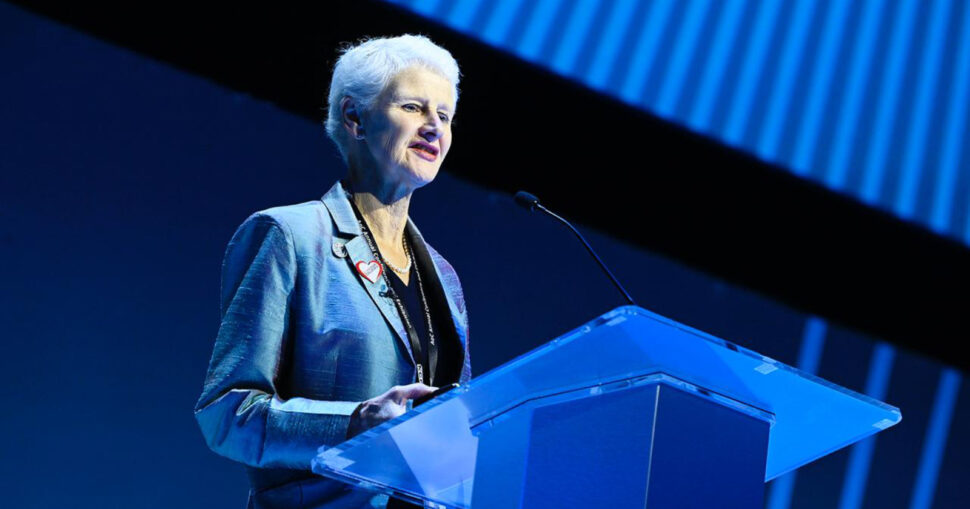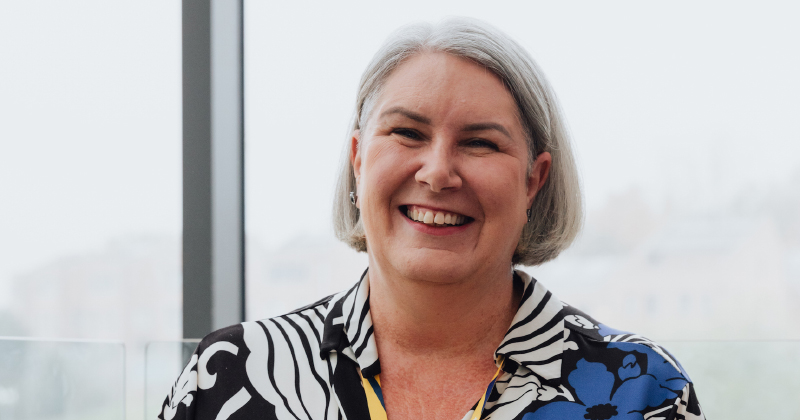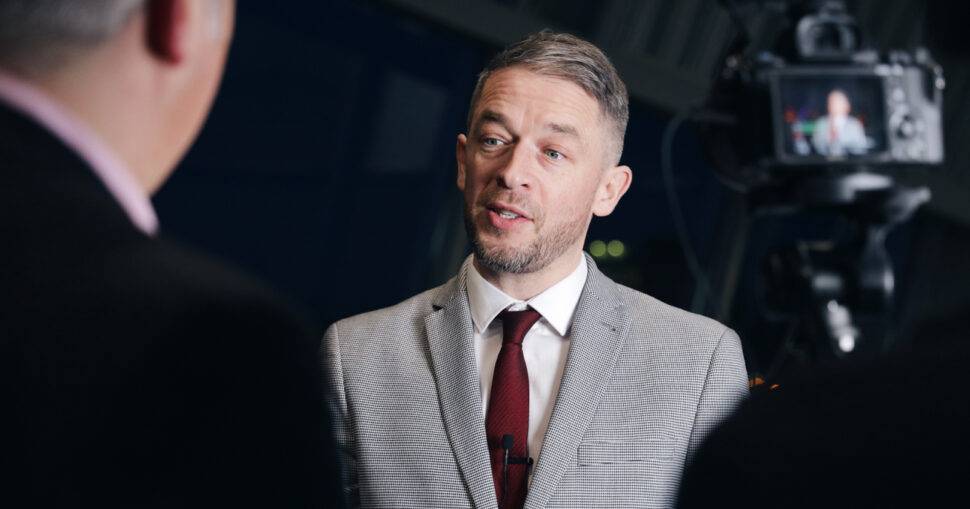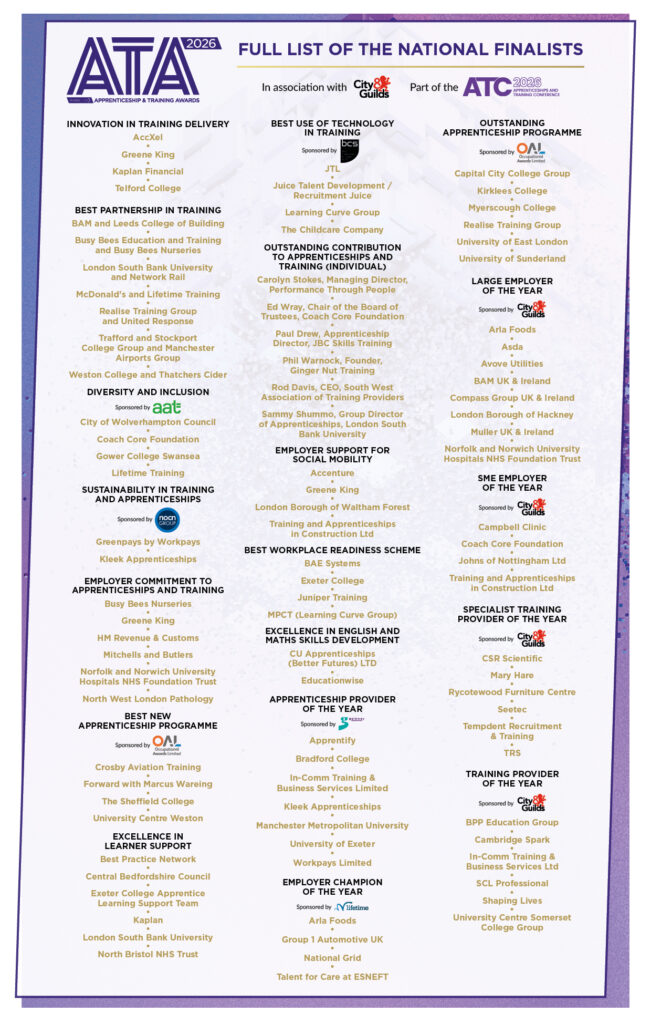Amid the buzz of the WorldSkills UK national finals at Cardiff and Vale College, Shelagh Legrave is animated but characteristically measured.
With just weeks left of her four-year stint as Further Education Commissioner (FEC), she speaks with the clarity of someone who’s spent decades leading in further education, and the bluntness of someone whose role has required tough judgment.
It was then education secretary Gavin Williamson who announced Legrave’s appointment as the successor to Richard Atkins back in April 2021. By the time Legrave took office that October, Williamson had been sacked following heavy criticism over his handling of the education brief during Covid.
It was a time when the college sector felt bruised, not only from the pandemic but also from a previous FEC tenure characterised by fear for many principals.
“I think there were 23 colleges in intervention when I started, and now there are eight,” she says. “That was one of my missions, to reduce the number of colleges in intervention.”
In her first interview with FE Week at the 2021 Association of Colleges (AoC) conference, Legrave told us she wanted to “change the image of the FEC from fear to support”. Four years on, she argues the shift is real.
“I feel we’re no longer the police that people don’t want to invite in; that if a college gets into difficulty, they’ll send me an email or ring me up or say, can you come and give us some help?”
Rising tides… and dangers
With leaders like the AoC’s David Hughes enthusiastically hailing a “turning of the tide” on funding thanks to a demographic boom and rising rates for young people, a vigilant Legrave is clear that college CEOs and their governors need to be careful.
“I think everyone’s feeling cheerful at the moment because the demographics are going up. But when they start to go down? How hard is it going to hit everyone? I don’t think it’s going to be that easy for people who haven’t got enough financial resilience.”
In the face of teacher strike action at 30 colleges next month, and longstanding industrial unease everywhere else, Legrave urged principals to resist the temptation to pump 16-19 funding increases into staff pay rises. Colleges must, Legrave says, build up cash before making any other decisions about how to spend extra funding.
“I would always say to college governors, set a cash level that you know you can never go beneath before making any decisions. Yes, invest in your people, people deserve to be paid well. There will continue to be capital money, but those grants are never going to be enough to resolve all the issues. So it’s about building up your cash reserves to deal with that. That’s what I would prioritise. Cash is king.”
There are certainly fewer colleges needing emergency bailouts these days. “But there are still colleges who go down to two cash days,” says Legrave, even though FEC guidance has been revised up from a 25-cash-day minimum to 40. “With my business head on, you’re too close to the wire if you’re much below 40 days of cash.”
But while the outlook for 16-19 funding is “undoubtedly much stronger”, adult education, particularly for the specialist adult education institutes, is “a huge challenge”.
Legrave reels off, without notes, the financial perils facing organisations like Northern College (set to merge with Barnsley College next year), Mary Ward Centre (undergoing an FEC structure and prospects appraisal) and Richmond and Hillcroft College “which is also struggling financially”.
Her prescription is blunt: merge or charge.
“I’d love a direction of travel for adult education to include more funding to support those colleges. But I equally accept there isn’t enough money to go around. If it becomes clear there isn’t going to be any more money, you’ve either got to merge with a college that’s got 16-18, or you do what Mark [Malcomson, principal of City Lit] has done very cleverly, develop your commercial offer.”
Education, education, education
Legacies of debt leaving some colleges with “too much property” and badly forecast capital sale receipts have peppered Legrave’s college intervention reports over the years.
But there are also instances where leaders have lost focus on the core business of teaching and learning.
“One of my takeaways from this role is that if people haven’t got education at the heart of what they’re doing, then they’re not running an effective college,” she says, reflecting on the five colleges to have been deemed ‘inadequate’ by Ofsted over her term.
“Where colleges have achieved an ‘inadequate’ Ofsted, it’s because they haven’t been talking about teaching and learning,” she explains.
Legrave traces these more cultural failings back over a decade. Staff training budgets, she recalls, were among the first casualties of the coalition-era austerity years.
“Nobody had any money,” she says. Colleges stripped back training to survive, and have never quite recovered the professional teaching identity she believes is needed.
“FE has always struggled to bring a professional group together of teachers who want to be members of an organisation and continue to talk about teaching and learning,” she says. Renewed investment in leadership helped, but “there’s not enough going into professionalising teachers in FE”.
Vulnerable colleges and vanity projects
The Department for Education’s recent refresh of college oversight beds in one of Legrave’s standout legacies – shifting the commissioner’s office from a service imposed on fearful colleges in trouble, to one of preventative action and an offer to guide and assist all colleges whether or not they are in imminent danger.
But while the pace of college mergers has slowed under Legrave’s tenure – she counts 10 over her term – there are still a handful of small colleges she is worried about that she will “watch with interest” in her retirement.
You can probably run a sixth form college on as little as £6 million, she says, but a general further education college bringing in less than £20 million is “vulnerable”. A quick glance at college finance data will show 20 in that position.
Her advice: don’t go hunting for “income streams you can’t control”, a nod to franchising, subcontracting and risky commercial ventures that have landed multiple colleges in trouble.
Legrave is candid. “You’ve got to look back to some leaders in the past and think that was a vanity project – why did you do that?”
While she says most leaders today have “a strong set of values”, the temptation to build, expand or chase prestige hasn’t disappeared entirely.
We don’t need another hero
The calibre of leaders has improved though, helped, in part, by better leadership training, mentoring and initiatives like the ‘Just One More Thing’ events where chairs, governance leads and principals share best practice.
Legrave warned college governors about the dangers of “hero principals”, which are thankfully on the decline. A deficit in values is just as likely to land leaders in hot water as a deficit of cash, she says.
“We’re in an age where you haven’t got as many hero leaders as perhaps you had in the past, though Weston College was an obvious example of that.”
For nearly two years, Legrave and her team investigated an unprecedented failure of leadership and governance at Weston College that saw the “concealment” of £2.5 million in undeclared payments to its then-principal, Sir Paul Phillips.
The saga could have done immense damage to the college sector had it not been for the rapid intervention and improvement roadmap put in place, under Legrave’s supervision, by the college’s new leadership.
But it was all avoidable, “with a set of governors who really challenged”, she said.
“There is a danger in any college, and that danger definitely still exists, that either the principal is so dominant that the governors accept exactly what they’re saying, or that the chair is so dominant that there’s no effective discussion at board.
“So when we went into Weston College, we said to the governors, why weren’t you asking questions? And because the college was so successful, they didn’t feel the need to.

Not here to be liked
Despite a reputation for calm authority, Legrave is disarmingly reflective about her own limitations.
Without naming names, there were “some colleges where we didn’t intervene quickly enough” and some where “we didn’t know there was an issue because our risk systems weren’t sufficient enough”.
This was, perhaps, behind the surprise post-16 white paper announcement of new ‘regional improvement teams’ that will keep a closer eye on college performance.
“Possibly, if I had a bigger ego, I might have had even more influence,” she says. But she is unapologetic about the way she has carried out the role: “You don’t do this job because you want to be liked.”
Some colleges, she acknowledges, “still feel very bruised by the FE Commissioner”.
But she insists she has always tried to deal with people as human beings first: “I’ve had some very tough conversations… but I’ve tried to treat everybody as human beings and support them to improve.”
Passing the baton
The highlight of the job though is seeing colleges emerge “from adversity and are now shining lights in their local communities”.
“Look at Coventry, look at Hull. Seeing colleges come through strongly and start to shine, that’s what I love.”
In just a few weeks, the reins will be handed to Education Partnership North East CEO Ellen Thinnesen. The handover meetings have begun, with a caseload Thinnesen will already be familiar with as one of Legrave’s national leaders of further education.
Taking the leap from running an ‘outstanding’ college group to being immersed in the world of the civil service, just as Thinnesen will do, was “a huge learning curve” for Legrave.
“It was difficult initially. You’re one of many people. You haven’t got the rituals that you’d have in a college of being in charge. So it’s a very different way of operating.
“I’ve really enjoyed it, but you just have to adapt and ensure that your voice is heard, because what’s really important as FEC is you have practitioner knowledge, and the civil servants really benefit from that.”
Crucially, she says, Thinnesen must ensure the sector continues to see the commissioner as “a resource they can use and rely on”.
After 45 years of work, Legrave is finally taking a breather. She becomes chair of the Sussex Cricket Foundation, continues her work with the Royal Anniversary Trust, and hopes to travel. “I love sport… I also want to enjoy myself,” she laughs.














